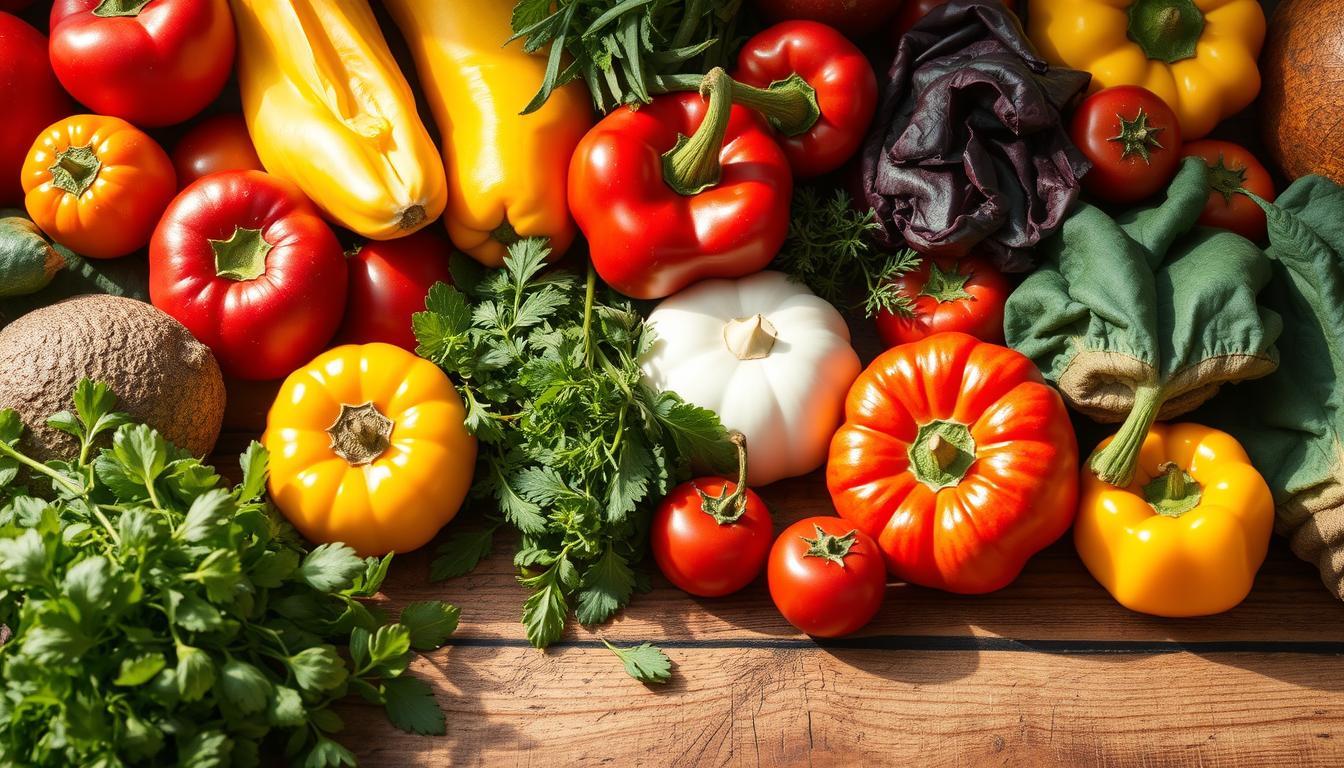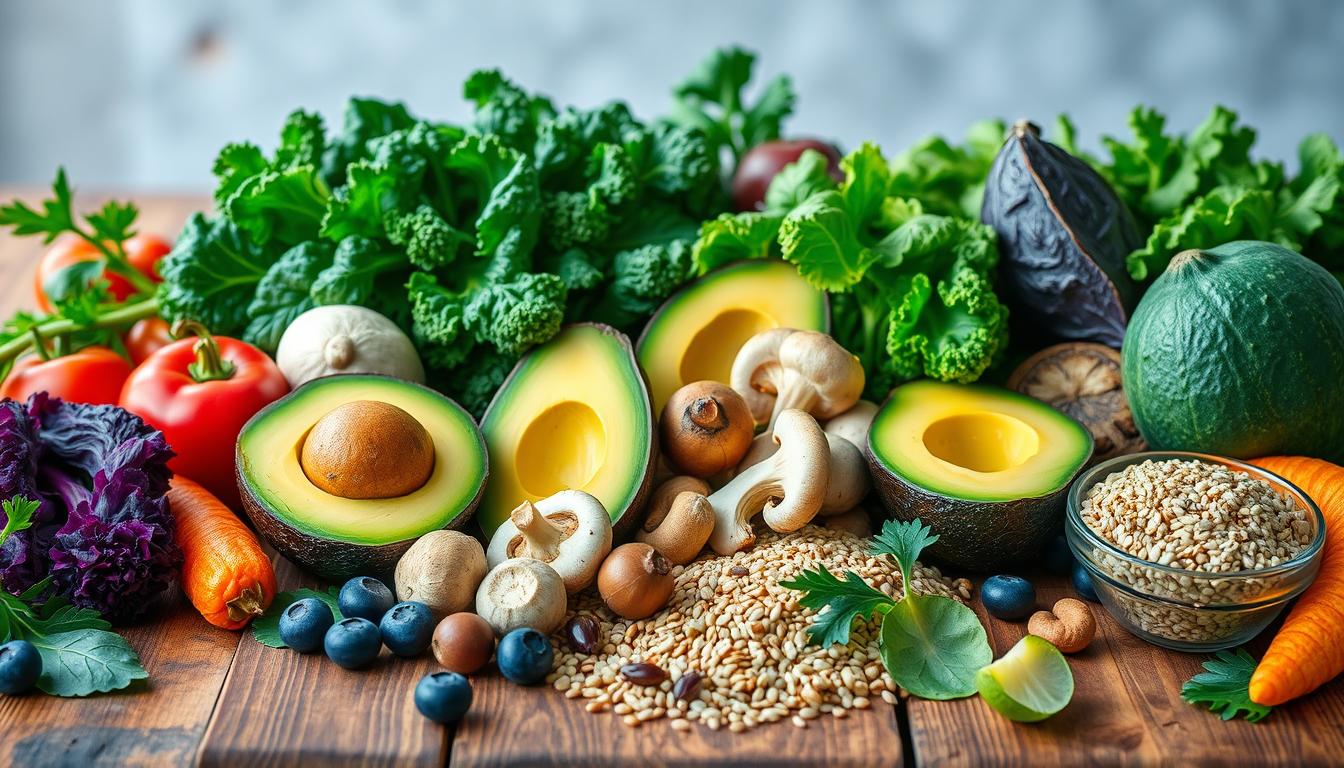As you walk through your local farmer’s market, the vibrant colors of fresh fruits and vegetables beckon you to explore. The sweet scent of in-season strawberries mixes with the earthiness of freshly harvested tomatoes, reminding you of the simple pleasures that come with each changing season. Once you begin to embrace the idea of a seasonal ingredient spotlight, you’ll find that cooking becomes not just a necessity but a joyful experience—one that connects you with nature’s rhythms and the bounty of what each season has to offer.
Imagine bringing home plump, ripe tomatoes from Nutbourne Tomatoes, with their rich history of delivering exceptional produce for over a decade. Pair those with ChalkStream® trout, sustainably sourced from England’s renowned rivers, and you create a dish that sings of freshness and quality. Cooking seasonally means not only savoring more flavorful, vibrant meals but also participating in a community tradition that values local sourcing and sustainability. With 67% of consumers eager to enjoy seasonal menus year-round, it’s clear that this culinary approach resonates deeply.
For many, engaging with seasonal cooking is an opportunity to break free from routine, to experiment with new flavors, and to embrace what’s available—ultimately leading to healthier dining choices. As you prepare to dive into this seasonal cooking showcase, consider how these ingredients can elevate your meals, your well-being, and your connection to the local farming community.
Key Takeaways
- Seasonal ingredients enhance flavor and freshness in meals.
- Connecting with local farmers promotes sustainable practices.
- Experimenting with fresh produce can make cooking exciting.
- Seasonal dishes are often more nutritious and flavorful.
- Embracing the seasons supports local economies and reduces food miles.
- Many consumers prefer dining experiences that highlight seasonal ingredients.
The Importance of Seasonal Ingredients
Utilizing seasonal ingredients not only leads to better-tasting dishes but also fosters a deeper connection with nature’s cycles. When you opt for locally sourced, seasonal produce, you align your cooking with the rhythms of nature, celebrating the foods available in each season.
Connecting with Nature’s Cycles
Seasonal ingredients are harvested at their peak ripeness, maximizing nutrient density. This means you receive higher levels of vitamins, minerals, and antioxidants in each bite. Connecting with nature’s cycles allows you to experience produce at its best. Its flavor is enhanced through natural ripening, creating an enjoyable eating experience that cannot be matched by out-of-season varieties.
Enhancing Flavor and Quality
Purchasing seasonal ingredients not only benefits your taste buds but also supports local economies. When you choose locally grown fruits and vegetables, you reduce transportation costs, ultimately leading to lower prices for consumers. Seasonal cooking practices minimize the carbon footprint associated with food transport and often result in lesser packaging waste. Furthermore, buying from local farmers strengthens community ties and helps preserve local agriculture.
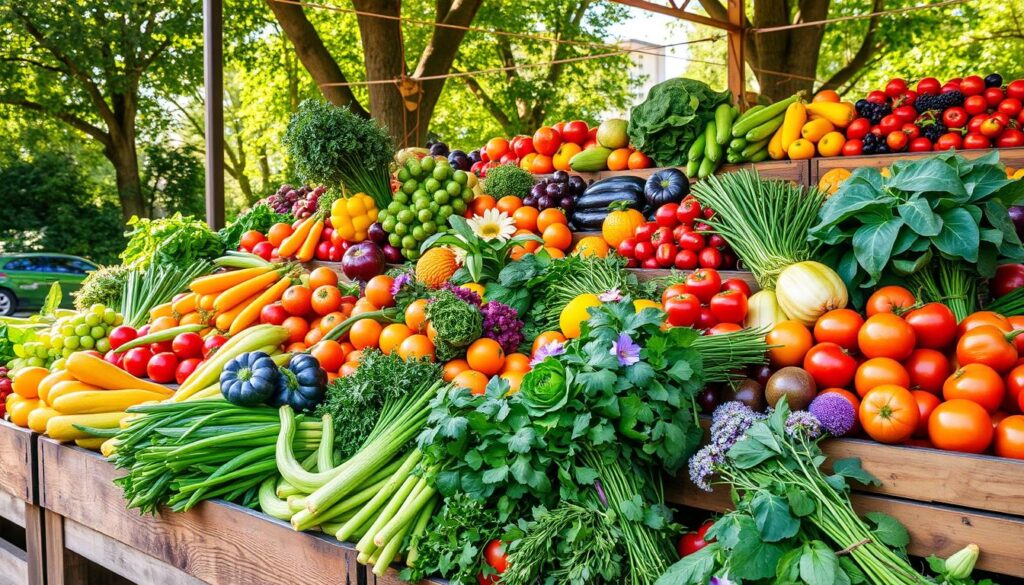
Understanding Seasonal Cooking
Seasonal cooking represents a timeless culinary tradition that celebrates the unique bounty of each season. Embracing this practice allows you to connect with local agriculture while exploring the diverse flavors that different times of the year offer. Not only does this approach inspire creativity in the kitchen, but it also reinforces the value of ingredients picked at their peak for superior taste and nutritional benefits.
A Timeless Culinary Tradition
Throughout history, cooking with seasonal ingredients has been a fundamental practice in various cultures. Many chefs and home cooks, like Suzanne Brady from Cove Cake Design, change their flavors every 2 to 3 months, highlighting the charm of seasonal bakes. This practice is not merely about adapting menus; it reflects an understanding of nature’s cycles and fosters resilience and adaptability in culinary creations. The trend is now gaining traction through platforms that track customer preferences, such as Square Analytics and Shopify.
Why Seasonality Matters
Seasonal cooking nurtures sustainability, supporting local farmers and reducing transportation emissions associated with out-of-season produce. By regularly assessing inventory and customer preferences using software tools, you can predict popular items and tailor your offerings accordingly. For instance, expecting flavors like matcha desserts in spring and gingerbread variations during winter can enhance your culinary repertoire. Engaging in collaboration with local farms encourages you to showcase special treats during harvest time while promoting eco-friendly practices, like compostable packaging, which attracts environmentally conscious customers.

| Season | Popular Ingredients | Culinary Significance |
|---|---|---|
| Spring | Asparagus, Peas, Strawberries | Fresh flavors bring brightness and vitality |
| Summer | Tomatoes, Peaches, Corn | Celebration of warmth and vibrant colors |
| Fall | Pumpkin, Apples, Squash | Rich, comforting flavors to welcome cooler weather |
| Winter | Citrus, Root Vegetables, Pears | Heartiness and warmth, perfect for cozy meals |
Benefits of a Seasonal Ingredient Spotlight
Highlighting seasonal ingredients offers numerous advantages, especially in terms of enhancing culinary experiences, supporting local economies, and promoting better health. As you explore the benefits of seasonal ingredients, you will discover how they can elevate flavor profiles, boost restaurant profitability, and contribute to healthier dining options.
Freshness and Flavor
The real magic of seasonal ingredients lies in their fresh flavors. When you choose produce at its peak season, the taste is unparalleled. For instance, cozy winter flavors like cinnamon and citrus create a delightful experience, infusing dishes with vibrant profiles. Restaurants that utilize seasonal ingredients can wow guests with unique combinations, improving their overall dining experience. Techonomic notes that 59% of diners are more inclined to order items labeled as “seasonal” on menus. This trend reveals the significant impact that fresh, seasonal offerings can have on consumer choices.
Economic Advantages for Restaurants
Incorporating seasonal ingredients into restaurant menus can provide considerable economic advantages. Bluecart identifies that restaurants focusing on seasonal offerings can achieve a decrease in their cost of goods sold (COGS) while increasing profits. By relying on local and abundant ingredients, restaurants not only reduce food waste but also attract a growing customer base eager for innovative dishes. Engaging descriptions of seasonal items on menus can even boost sales by 27%, creating a win-win scenario for both restaurants and patrons.
Healthier Dining Choices
Seasonal ingredients promote health benefits that extend far beyond taste. Consuming foods at their natural peak ensures higher levels of vitamins, minerals, and antioxidants, essential for a balanced diet. For example, citrus fruits during winter provide vitamin C, which is vital for immune support. Embracing a diverse range of seasonal produce encourages varied diets that enhance digestion and overall well-being. This connection to seasonal eating nurtures a deeper appreciation for nature’s cycles and the richness it offers.
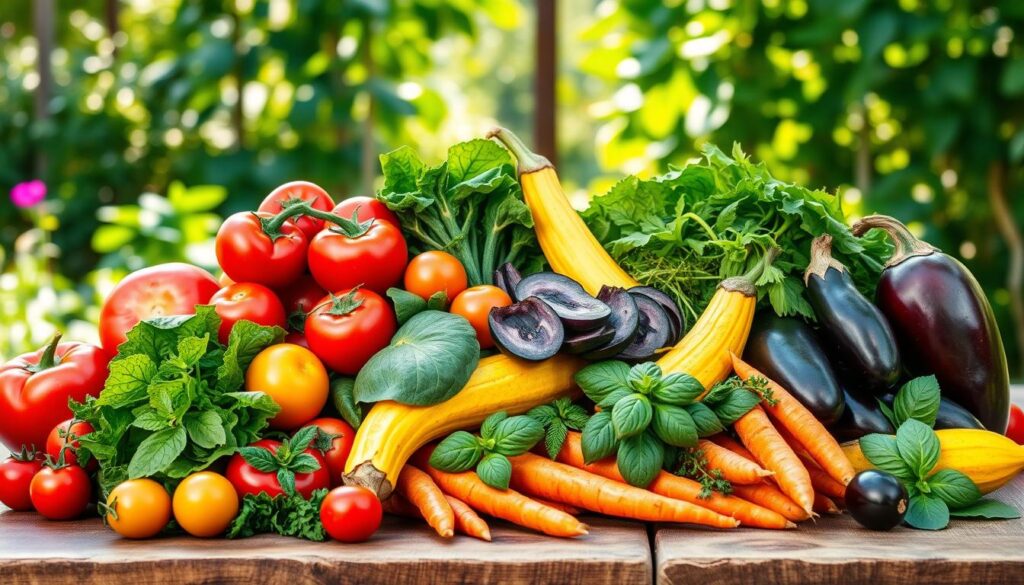
| Benefit | Description |
|---|---|
| Freshness and Flavor | Seasonal ingredients provide unbeatable taste, enhancing culinary experiences. |
| Economic Advantages | Restaurants may see lower costs and increased profits by focusing on seasonal offerings. |
| Health Benefits | Eating seasonally results in higher nutritional value and supports overall health. |
Ingredient of the Month: Fresh Picks
Every month brings a unique ingredient worth showcasing, enhancing our meals with seasonal highlights. This month, let’s explore delightful fruits and their benefits, focusing on those that flourish through local sourcing. This approach not only supports farmers but also ensures your kitchen is filled with the freshest ingredients, ready to transform your culinary creations.
Highlighting Unique Ingredients
Introducing this month’s featured ingredients, rich in flavor and packed with nutrients:
- Shasta Gold® Tangerines: Available from February to March, these sweet citrus fruits burst with flavor and can brighten any dish.
- Cherimoyas: Approximately 94 calories per 3½ ounce serving, these creamy fruits are great sources of vitamin B and fiber.
- South African Baby Pineapples: Low in calories and fat-free, they’re packed with vitamin C, perfect for adding a tropical touch.
- Passion Fruit: At only 18 calories for a medium fruit, they offer vitamins A and C, elevating both health and taste.
- Kiwano Melons: Containing just 24 calories in 3½ ounces, they boast more potassium than bananas and are rich in vitamin C.
- Sweet Young Coconuts: These versatile fruits provide hydration and flavor, lasting up to two weeks in your refrigerator and available year-round.
- Guavas: Only about 30 calories each and a fantastic source of vitamin C, guavas add a refreshing sweetness.
- Strawberry Papayas: With only 50 calories per cup, their vitamin C content makes them a nutritious addition to desserts and smoothies.
- Kumquats: These small, flavorful fruits contain around 50 calories in a 3½ ounce serving and are excellent sources of vitamin C.
- Pixie Tangerines: High in vitamin C and potassium, they can stay fresh in your refrigerator for up to one week.
- Key Limes: A zesty addition to numerous dishes, they provide good vitamin C content and can last at room temperature.
- Cara Cara Oranges: With low calories and an impressive vitamin C profile, they can be kept fresh for about a week.
- Oro Blancos: These fruits offer a taste reminiscent of a Chinese grapefruit or pummelo, adding uniqueness to your fruit salads.
Local Sourcing and Relationships
Engaging with local farmers strengthens community bonds. By prioritizing local sourcing, your restaurant can obtain ingredients at peak freshness, resulting in vibrant flavors in your dishes. This collaboration not only benefits you and your patrons but also provides a sustainable option for the environment. With fresh produce, you can create innovative seasonal highlights that tell a story, elevating your offerings to new culinary heights.

| Ingredient | Calories | Key Nutrients | Availability |
|---|---|---|---|
| Shasta Gold® Tangerines | Varies | Vitamin C | February – March |
| Cherimoyas | 94 per 3½ oz | Vitamin B, Fiber | Seasonal |
| South African Baby Pineapples | Low-Cal | Vitamin C | Seasonal |
| Passion Fruit | 18 per medium fruit | Vitamins A and C | Seasonal |
| Kiwano Melons | 24 per 3½ oz | Potassium, Vitamin C | Seasonal |
How to Showcase Seasonal Ingredients on Your Menu
Creating a seasonal menu design that highlights the natural beauty and vibrant flavors of fresh ingredients inspires culinary creativity. By showcasing ingredients effectively, you can transform ordinary dishes into extraordinary experiences that captivate your guests. Here are some strategies to enhance your offerings with seasonal flavors.
Creating Eye-Catching Dishes
Visual appeal plays a crucial role in enticing customers. Consider these techniques:
- Colorful presentations: Use a kaleidoscope of summer fruits and vegetables to create visually striking dishes.
- Thoughtful garnishing: Elevate dishes with creative garnishes that add depth and vibrancy.
- Customizable stations: Incorporate build-your-own meal options to engage your diners and cater to individual preferences.
Incorporating Seasonal Flavors in Recipes
Your recipe ideas should reflect the freshness of seasonal ingredients. Here are several approaches:
- Utilize local produce: Embrace regionally sourced ingredients to enhance flavors and connect with consumers’ desire for authenticity.
- Experiment with imperfect produce: Create soups, sauces, and unique dishes to minimize waste and showcase creativity.
- Implement seasonal events: Host interactive dinners or tastings featuring your seasonal menu to encourage engagement.
Take advantage of summer’s bounty by incorporating infused beverages and refreshing cocktails tailored to available produce, such as fresh fruit smoothies or herb-infused drinks. The combination of vibrant colors and complimentary flavors makes for a memorable dining experience.
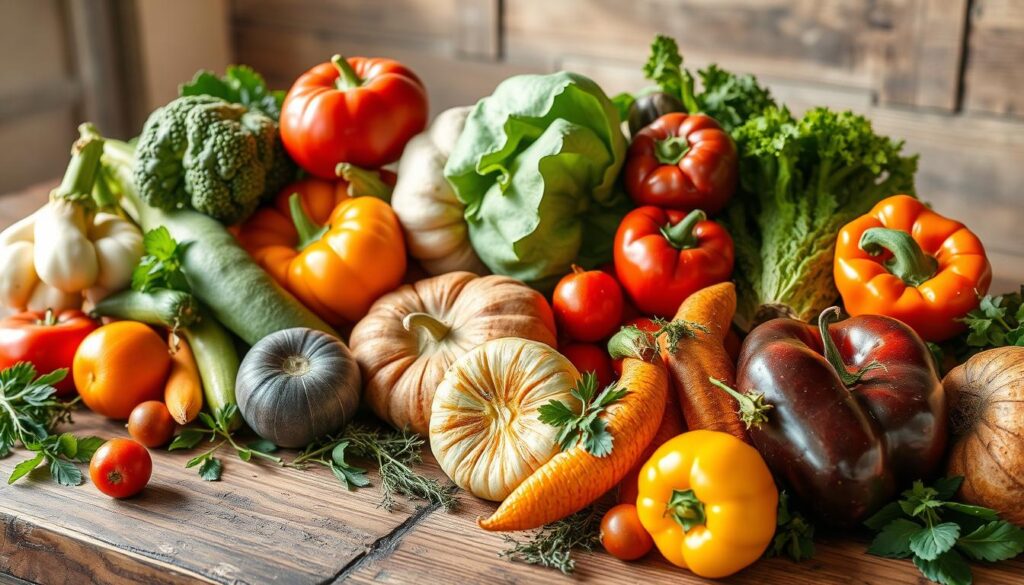
| Dish | Main Ingredients | Presentation Style |
|---|---|---|
| Grilled Peach Salad | Grilled peaches, arugula, goat cheese, candied pecans | Layer, drizzle with balsamic reduction |
| Summer Vegetable Medley | Local zucchini, bell peppers, corn | Vibrant colors, served in a rustic bowl |
| Infused Water Station | Seasonal fruits, herbs | Transparent pitchers showcasing ingredients |
| Signature Cocktail | Fresh berries, herbs, local spirits | Garnished with a sprig of mint |
By thoughtfully integrating seasonal ingredients into your dishes, you not only enhance their appeal but also create memorable experiences for your guests. Engage them with your culinary artistry, and let the freshness of the seasons shine through your menu.
Spotlight on Seasonal Ingredients
Embracing the beauty of seasonal ingredients opens up a world of possibilities in your cooking. By integrating freshly harvested products into your meals, you can enjoy not only vibrant flavors but also enhanced nutritional benefits. Let’s explore some examples of seasonal ingredients and how you can creatively adapt your dishes to showcase these gems throughout the year.
Examples of Seasonal Ingredients Across Seasons
Seasonal ingredient spotlight reveals a diverse array of fruits, vegetables, and proteins available during different times of the year. Here are some highlights:
- Heirloom tomatoes: With their vibrant colors and distinct flavors, these tomatoes can brighten up any dish.
- Specialty mushrooms: Explore the rich flavors of shiitake, oyster, and other unique varieties for a gourmet touch.
- Unusual grains and pulses: Experiment with black lentils for their versatility and nutritional benefits.
- Fresh herbs beyond basil: Incorporate tarragon, lovage, and sorrel to add exciting tastes to your meals.
- Seasonal superfoods: Pomegranates and kale are not just trendy; they offer impressive health benefits.
- Indigenous ingredients: Flavors like aji amarillo and berbere spice introduce an exciting cultural twist to your dishes.
- Sweet surprises: Try alternative sweeteners like date syrup and agave nectar for a creative baking experience.

Adapting Dishes for Seasonal Changes
Adapting your dishes to incorporate seasonal ingredients allows for a refreshing culinary journey. Consider these tips for seamless transitions:
- Replace heavier ingredients with lighter seasonal options, such as using Greek yogurt instead of butter on corn.
- Incorporate antioxidant-rich fruits like blackberries and kale for added health benefits while enhancing the overall flavor profile of your meals.
- Explore new cooking techniques, such as roasting or sautéing, to highlight the characteristics of seasonal produce.
- Experiment with vegetarian and plant-based dishes using seasonal grains and pulses for a nutritious twist.
- Utilize fresh herbs in marinades and dressings to elevate your dishes and showcase their vibrant flavors.
By embracing seasonal ingredient spotlight and making thoughtful adaptations of dishes, you can create delightful meals that reflect the changing seasons and nourish your body. Enjoy the journey of culinary exploration and let nature guide your choices!
Challenges in Seasonal Menu Design
Designing a seasonal menu presents unique challenges that can test even the most experienced chefs and restaurant managers. One of the primary hurdles involves maintaining consistency and quality control. As you incorporate fresh, seasonal ingredients, fluctuations in quality can occur, making it essential to ensure that every plate meets the high standards your customers expect.
Consistency and Quality Control
Achieving a balance between quality control and using seasonal ingredients often requires careful management. Local produce offers exceptional taste and nutritional benefits, yet managing supply can be unpredictable. Restaurants like Kindling face the task of constantly innovating their menu while ensuring that signature dishes, like the cuttlefish stew available for a limited time each May, maintain their allure. Consistent training for your staff becomes crucial, as they need to stay updated about ingredient varieties, preparation methods, and presentation styles that reflect the current season.
Consumer Expectations vs. Evolving Menus
Shifting consumer expectations pose another significant challenge in seasonal design. Diners today appreciate fresh, local ingredients but often have established favorites they anticipate on the menu. You may need to find a way to satisfy these consumer expectations while still evolving your offerings. Educating your customers about the benefits of seasonal dining can foster appreciation for new dishes while maintaining interest in returning favorites, such as the winter venison dish at Kindling. Achieving this delicate balance may involve strategic menu placements and design features to engage diners’ attention effectively.

| Challenge | Description | Solution |
|---|---|---|
| Maintaining Quality Control | Ensuring consistent taste and presentation using seasonal ingredients. | Invest in staff training and quality checks. |
| Addressing Consumer Expectations | Balancing seasonal innovations with classic customer favorites. | Educate diners on seasonal benefits and menu rotation. |
| Adapting to Ingredient Availability | Fluctuations in local produce can affect dish consistency. | Develop flexible menus that can adjust based on availability. |
| Menu Engineering | Understanding how to place dishes for maximum visibility. | Implement strategic placements and use attractive menu designs. |
Tackling the challenges in seasonal design ultimately leads to a more rewarding dining experience for you and your customers. Navigating these complexities with a thoughtful approach opens the door to creativity, ensuring that your seasonal menu thrives.
Creative Solutions for Seasonal Menu Adaptation
Adapting seasonal menus is not just about changing ingredients; it involves strategic planning and collaboration. Incorporating creative menu solutions enhances the overall dining experience while supporting local agriculture. Successful adaptation begins with effective staff training to ensure every team member understands the significance of seasonal ingredients.
Training Staff and Building Knowledge
Investing in staff training creates a knowledgeable team, empowering them to share the stories and benefits of seasonal ingredients with diners. Engaging your staff in reasoned discussions about local sourcing can make them passionate advocates for your new seasonal menu items. Regular training sessions can highlight key aspects like:
- The importance of freshness and flavor in seasonal cooking
- Communicating dietary information and ingredient sourcing
- Understanding consumer preferences and cravings throughout the year
Utilizing Local Farms for Supply
Establishing strong local farm relationships is vital for a successful seasonal menu. Collaborating with nearby farms not only ensures high-quality, fresh ingredients but also supports the local economy. This strategy can include:
- Creating partnerships with diverse suppliers to reduce dependency risks
- Leaning on local farms to predict seasons’ offerings, leading to innovative dish development
- Promoting limited-time specials that capitalize on the availability of unique ingredients
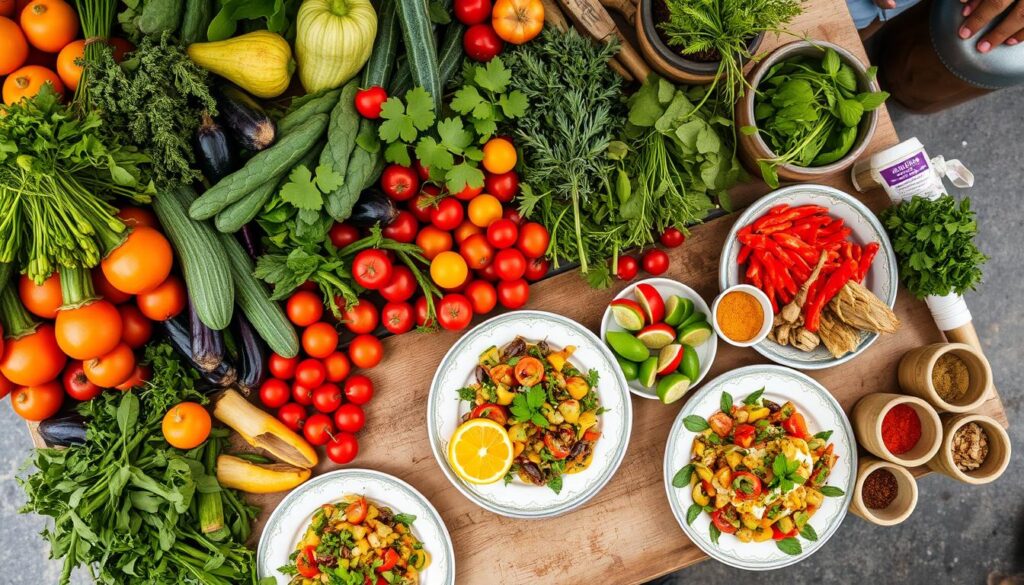
Your restaurant can stand out by showcasing seasonal adaptability. By leveraging creative menu solutions and fostering strong local farm relationships, you can enhance your offerings, reduce costs, and improve customer engagement. Training your staff to understand and articulate these elements further enriches the dining experience, making it memorable for your guests.
Seasonal Cooking: A Path to Sustainability
Embracing seasonal cooking contributes to the broader conversation around sustainability in cooking. This culinary practice not only enhances the flavor and nutritional quality of dishes but also plays a crucial role in reducing our collective carbon footprint. By making intentional choices about the ingredients you use, you actively support local economies while promoting sustainable practices within the food system.
Reducing Carbon Footprint
Seasonal cooking significantly impacts carbon footprint reduction by minimizing the need for long-distance transportation of food. When you choose locally sourced seasonal ingredients, you directly contribute to lower greenhouse gas emissions. For example, transporting seasonal produce requires less energy compared to importing out-of-season goods from distant locations. Fresh vegetables and fruits, such as juicy summer corn or vibrant spring peas, are often picked at their peak ripeness, delivering higher nutrient content and delicious flavors.
Supporting Local Economies and Farmers
Purchasing from local farmers not only supports their livelihoods but also strengthens your community. Farmers’ markets serve as a hub for seasonal produce, showcasing what is fresh and available in your region. Engaging with local farmers fosters relationships and creates a sense of connection with the food you consume. The choices you make in selecting ingredients—like the hearty winter sweet potato or the comforting fall butternut squash—play a crucial role in sustaining local economies.
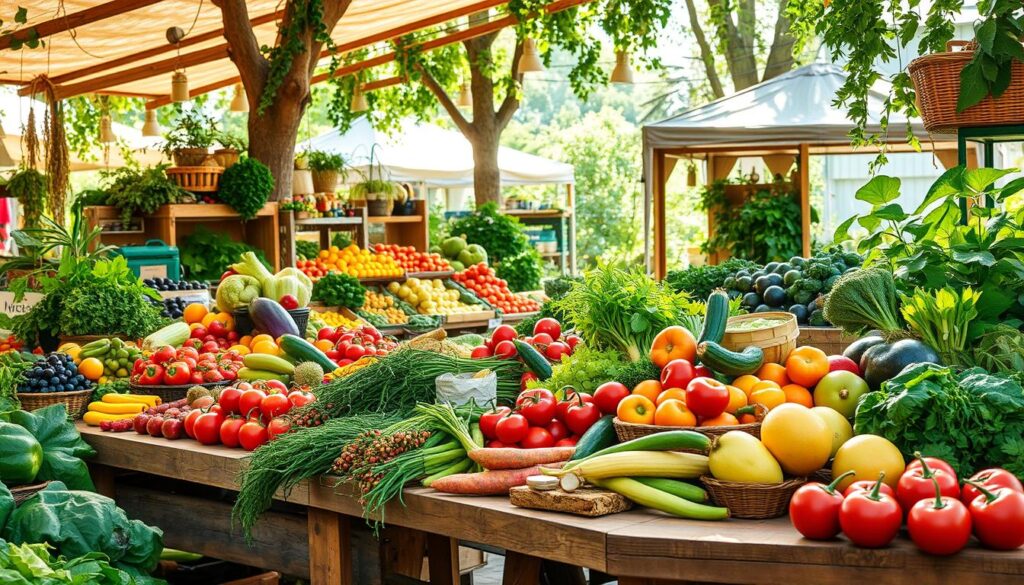
Cooking with seasonal produce encourages culinary creativity while emphasizing sustainability. It invites you to adapt your recipes based on what’s available, leading to delicious creations like grilled zucchini in summer or roasted kale in winter. By embracing these practices, you not only feed your body nourishing foods but also participate actively in fostering economic, environmental, and cultural sustainability.
Engaging Your Audience with Seasonal Menus
Creating a buzz around seasonal menus can captivate your audience and encourage repeat visits. Seasonal menus not only highlight fresh ingredients but also foster a sense of community and connection with your patrons. To achieve this, focus on strategies that ignite audience excitement and showcase your culinary innovations.
Creating Excitement for New Dishes
Engaging menus are essential for drawing attention to new dishes. Setting specific, measurable goals enhances promotional strategies. For example, aim to increase revenue by 15% between December and February by leveraging seasonal promotions. Utilize social media platforms, particularly Instagram, to create eye-catching posts that introduce new items. With over 130 million active users, this platform offers immense opportunities to reach potential diners. Take advantage of Instagram Stories for time-sensitive promotions, such as flash sales or limited-time dishes. Collaboration with local food influencers can amplify your reach and lend authenticity to your messaging.
Promoting Your Seasonal Ingredients
To effectively promote seasonal ingredients, develop newsletters that communicate upcoming events and special promotional offers. This tool serves as a means to keep your loyal customers informed and engaged. Highlight stories about your seasonal produce, share recipes, and showcase chef spotlights to bolster audience excitement. Tracking the performance of your newsletters will provide insights into what captivates your subscribers, allowing for continuous improvement in outreach techniques. Craft promotions that align with cultural moments and your brand’s values for maximum impact, fostering deeper connections with your customer base.

Conclusion
Embracing seasonal ingredients in your cooking brings an array of benefits that transform your meals into vibrant, flavorful experiences. The importance of seasonal cooking benefits cannot be overstated, as it allows you to connect with local farmers, enjoy fresher produce, and relish the unique tastes that each season offers. From the comeback of red cabbage to the growing popularity of dishes like Chinese Peking duck, exploring seasonal flavors can lead to delightful culinary adventures.
As you experiment with fresh ingredient spotlight throughout the year, consider incorporating whole fish into your repertoire or revisiting classic dishes with a modern twist. With a focus on minimal preparation, you can highlight the natural flavors of your ingredients, creating satisfying meals that resonate with the essence of each season. By supporting local farms and choosing in-season produce, you also contribute to sustainability and the local economy. Additionally, incorporating whole fish into your cooking routine provides essential omega-3 fatty acids, which are considered superfoods for your health. These nutrients are known to support heart health and reduce inflammation in the body. By embracing a seasonal and sustainable approach to cooking, you can nourish both your body and your community.
Now is the perfect time to take action in your kitchen, whether you’re crafting a hearty winter meal or a refreshing summer salad. Explore diverse seasonal ingredients, and let the rich bounty of each season inspire you to create dishes that not only tantalize the taste buds but also lead to truly memorable culinary experiences.
